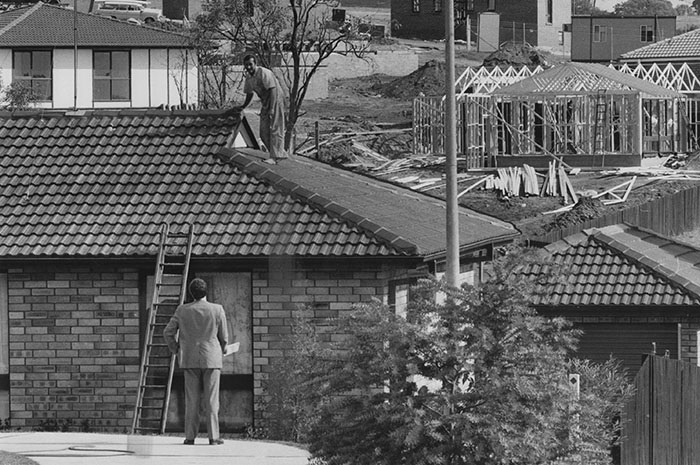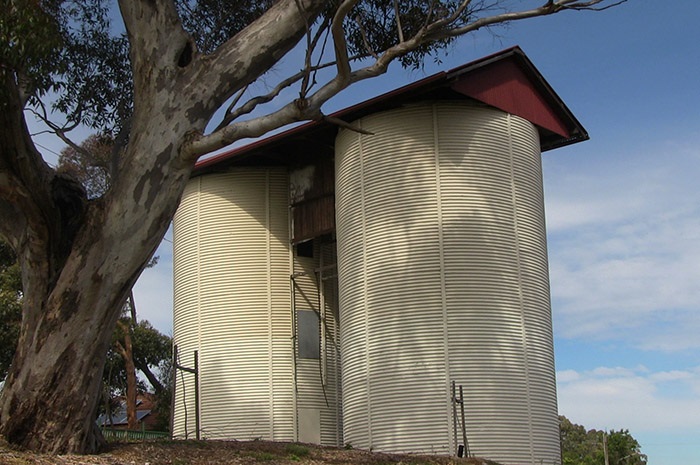History of Ambarvale
The following text is from "Campbelltown's Streets and Suburbs - How and why they got their names" written by Jeff McGill, Verlie Fowler and Keith Richardson, 1995, published by Campbelltown and Airds Historical Society. Reproduced with kind permission of the authors.
With tongue-twistin titles like Grimwig Crescent, Pickwick Way and Crisparkle Drive, most people wouldn't have 'a dickens of a chance' at guessing how Ambarvale got its street names.
Well, by Dickens, that's the answer! They nearly all recall characters from the novels of famous nineteenth century author, Charles Dickens.
When the first plans to develop the suburb were drawn up in 1973, a contest was held among the staff of Lend Lease Corporation to come up with a street theme suggestion.
Amid a crop of weird and wonderful ideas, it was long time employee, Joy Jarvis, who dreamt up the policy of using characters from fictions as famous as Oliver Twist, Tale of Two Cities and A Christmas Carol. Campbelltown Council backed the suggestion, and by the mid 1970s the first homes and roads were underway.
The suburb itself was named after the old Ambarvale farm which despite popular belief, actually stood on the other side of Appin Road where the suburb of St Helens Park is now. Still, as Ambarvale was one of the oldest property names to be used south of Campbelltown, the Council decided to apply to use the name and the Geographical Names Board approved it in 1976.

Victor Konemann on the roof of his new home in Ambarvale.
Ambarvale was the land granted to former convict, Samuel Larken. An artist working in the Covent Garden area of London, he was convicted of stealing jewellery, clothing and some silverware from a St Pancras boarding house and transported to New South Wales on the Minorca in 1801. As an educated man he was immediately put to work for the colonial administration and within two years had won his conditional pardon, followed by an absolute pardon three years later. He held various posts within the administration before being appointed Government Storekeeper at Parramatta in 1813.
In 1816, Larken and his de facto father-in-law, John Wild, received adjoining land grants, the second property being named Egypt Farm. Portions of both grants were later incorporated into the famous St Helens Park property. A spread of small wheat farms dominated the rolling hills that are now known as Ambarvale. But these were replaced by dairies after rust disease ruined the crops in the 1860s.
One of the better-known properties was Glen Lora dairy farm, which was owned in the 1800s by the Fieldhouse clan. Frederick Munro was the owner of the farm early this century.
Glen Lora stood near the modern route of Woodhouse Drive.
Built in the 1970s, this thoroughfare was named after another family that had help pioneer the southern frontier of Campbelltown. George Woodhouse had been given a land grant off Appin Road in 1823.

Historic silos on Appin Road. The silos are the symbol of Ambarvale Primary School.
It was March 1972, that the State Government had first released the paddocks for urban development and, by the end of 1975, the first homes were under construction.
Lend Lease declared the $180 million estate to be "one of the largest continuous residential projects ever undertaken in Australia" and it was officially opened by a newly-elected NSW Premier Neville Wran, in June 1976.
In the following years, the suburb spread southward, using the street title theme approved three years earlier.
Dickens Road recognises the great novelist himself, while Copperfield Drive pays a due to one of his best known books, David Copperfield. A glance at any street directory will show the full catalogue of names.
But a brief selection would include Barnaby Place, after the novel Barnaby Rudge, Boythorn and Jarndyce from Bleak House, and Miss Havisham, Estella, Jaggers, and Joe Gargery from Great Expectations.
Nickelby Way comes from Nicholas Nickelby, as does Lillyvicks Crescent, Squeers Place, Cheeryble Place, and Mantalini Street.
Lend Lease obviously ruled out using some less euphonious Dickens character names, such as Mr Snawley, Sir Tumley Sniffim and Uncle Pumblechook.
Wran had praised Lend Lease for 'bullocking' through the economic downturn, but his optimism was short-lived. By the late 1970s, Lend Lease had dropped its plans to create 'the largest continual residential project', and sold remaining sections of its estate to Landcom and a private firm which later sold its holdings to the NSW Housing Commission.
A major attraction to many early home buyers was a large 'ornamental lake', created to disguise the 'ugly appearance' of a shale quarry which had stood off Woodhouse Drive. But it soon sparked debate as to whether it was a true benefit for residents and scenic haven for wildlife or, as the critics suggested, a 'drowning pool' for children. In 1981, Council decided to fill it in and convert it into Fieldhouse Park - named after the early family.
Nurra Reserve is Aboriginal for 'camp', while Mandurama Reserve means 'waterhole'.
Another park, Thomas Acres Reserve, was named after the pioneer farmer who was one of the first land owners in the district. His is the first burial recorded at St Johns Catholic Cemetery. Thomas Acres Public School also notes his role.
Ambarvale Public School had been built in 1977-78 and Thomas Reddall High School was opened in April 1992. Its name was chosen at a public meeting to honour Reverend Thomas Reddall, who had founded some of the earliest schools in Campbelltown.
By the 1990s, the only major section of Ambarvale left to be developed was the hilltop near Macarthur Square. And by 1995, this new estate was being marketed and sold.
The main thoroughfare, which forms the suburb border with Glen Alpine, is Englorie Park Drive. This name comes from the historic Englorie Park homestead(PDF, 173KB) which still stands nearby - although it is misspelt. Early owner Charles Burcher, had actually called it Euglorie Park, although the incorrect version is more widely used.
It should also be pointed out that when the house was first built in 1880 by Alfred Leith Park, it was called Parkholme - hence Parkholme Circuit.